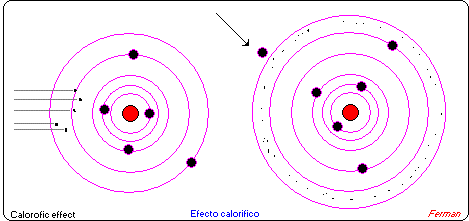 |
 |
 |
 |
 |
 |
 |
 |
 |
 |
 |
 |
 |
 |
 |
 |
 |
 |
 |
 |
 |
 |
 |
 |
 |
 |
 |
 |
 |
 |
 |
|
|
 |
|
|
 |
|
|
|
|
 |
|
|
|
|
|
|
|
|
|
Ferman's Cosmos Model
Photoelectric effect-Calorific effect |
|
|
|
|
 |
|
|
|
|
|
|
We know the Law of Universal Balance that tells us that:
All the gravitational systems as atoms and stars tend to have the same energy density.
So if we give energy to an atom, this circumstance produce energy unbalanced in it being necessary an energetic readjust. This atom has to increase its volume to assimilate the given energy to maintain the same density of this energy, or to expel energy with object of continuing maintaining the allowed middling energy.
The chosen procedure will be consequent with the characteristics of each atom and of the class and potential of the given energy.
In this summary to facilitate its understanding, I will mention two prototypes of examples that are the photoelectric effect and the calorific effect. |
|
|
|
|
|
 |
|
|
|
|
|
In the photoelectric effect (first drawing) when being atoms inside the pass of a potent source of luminous energy, to which this atom cannot manage due to its speed and autonomy, in this case atom have to expel one or more external electrons and later to pass interior electrons to these external positions, getting with it to compensate the luminous energy in which are immersed with loss of energy in electrons form. |
|
|
|
|
|
 |
|
|
|
|
|
In the calorific effect (drawing 2), atom can manage and absorb the calorific particles that are receiving. Later atom proceeds to acquire an electron from the exterior, increasing its volume and compensating the acquisition of calorific particles with this increase of volume. In such a case the half density is gotten by increase of volume, calorific energy and new electrons at the same time.
Now well, the photoelectric effect type (give electrons) occur very often with calorific energy also. For instance in the incandescent lamps, chemistry reactions, etc. |
|
|
|
|
|
<< Back to Cosmology |
|
|
|
<<<<<Home |
|
|
|
|
>>> Refraction, Diffraction |
|
|
|
|
|
|
|
|
|
|
|
|
|
|
|
|
|
|

|
|
|
|
|
|
|
|


